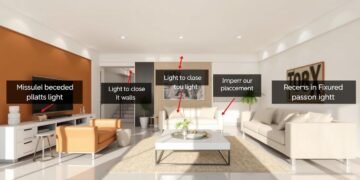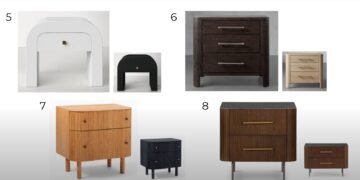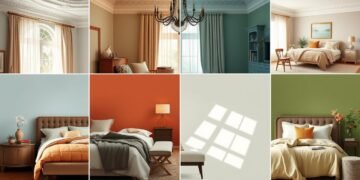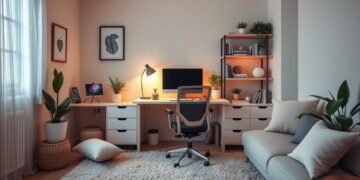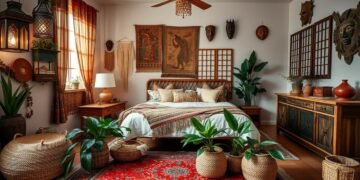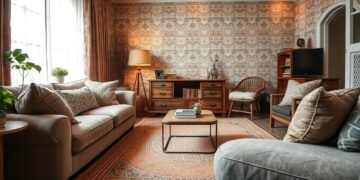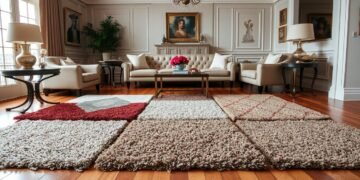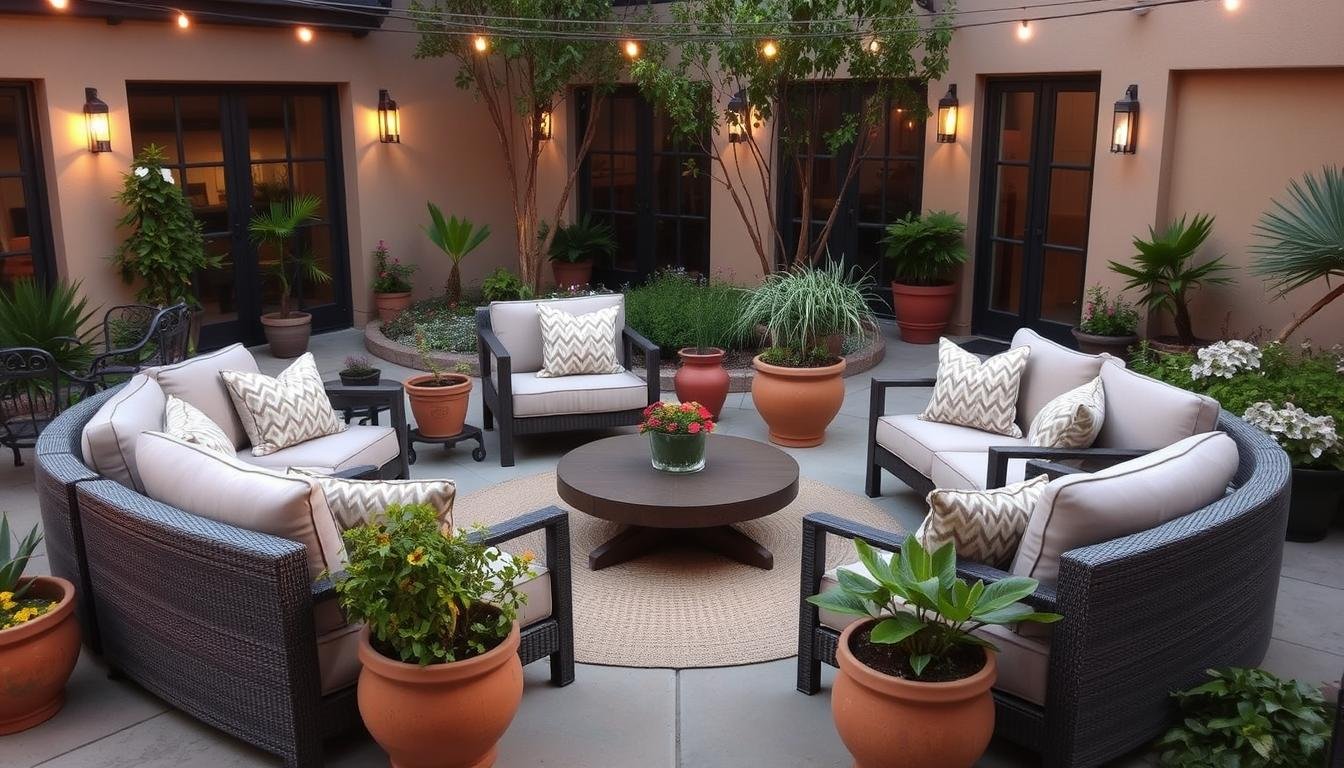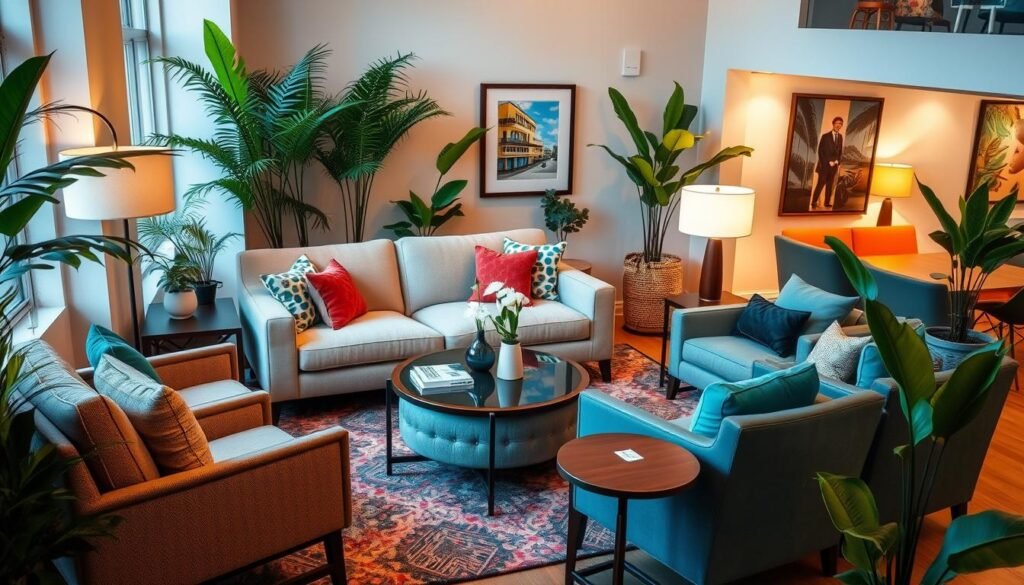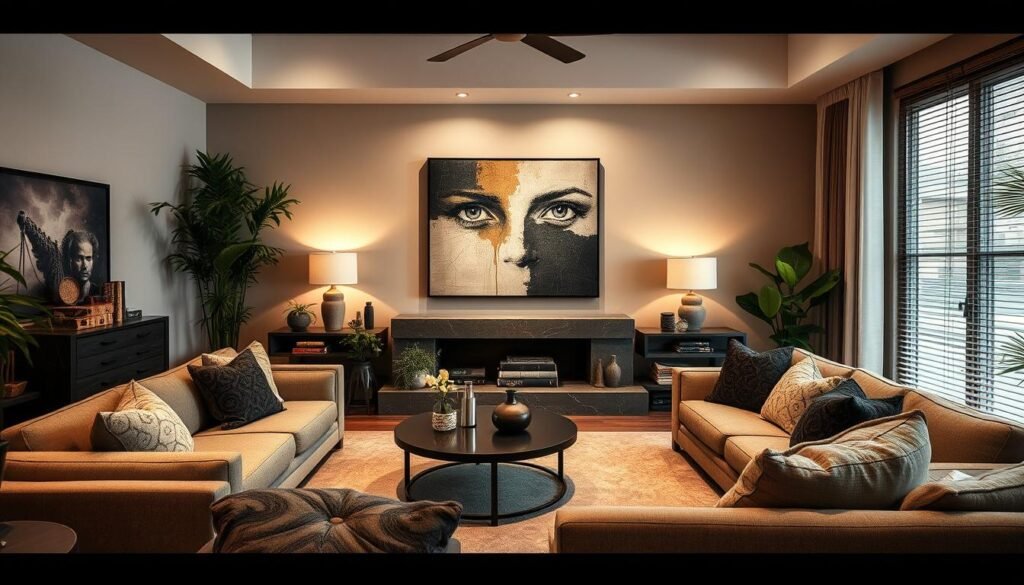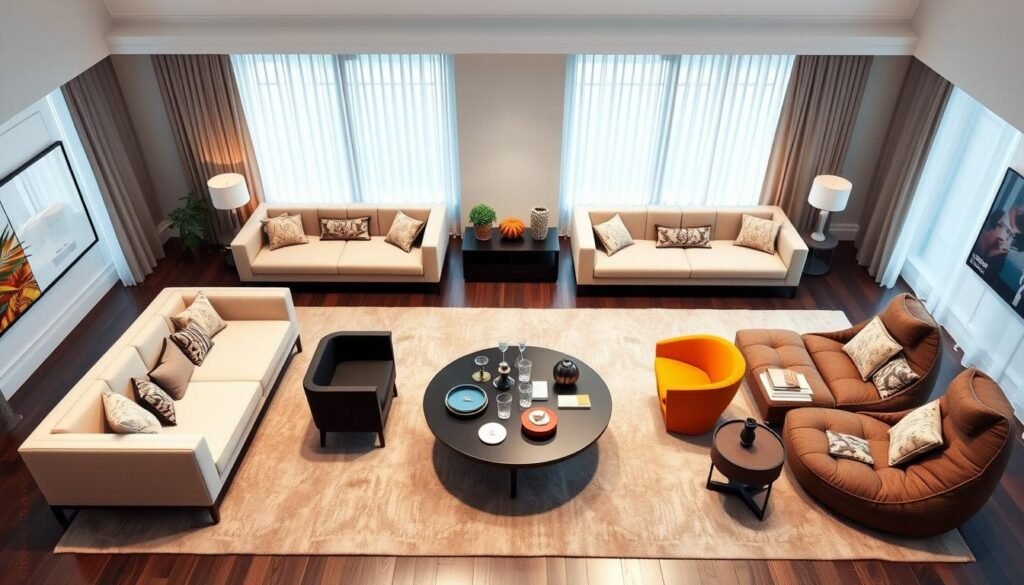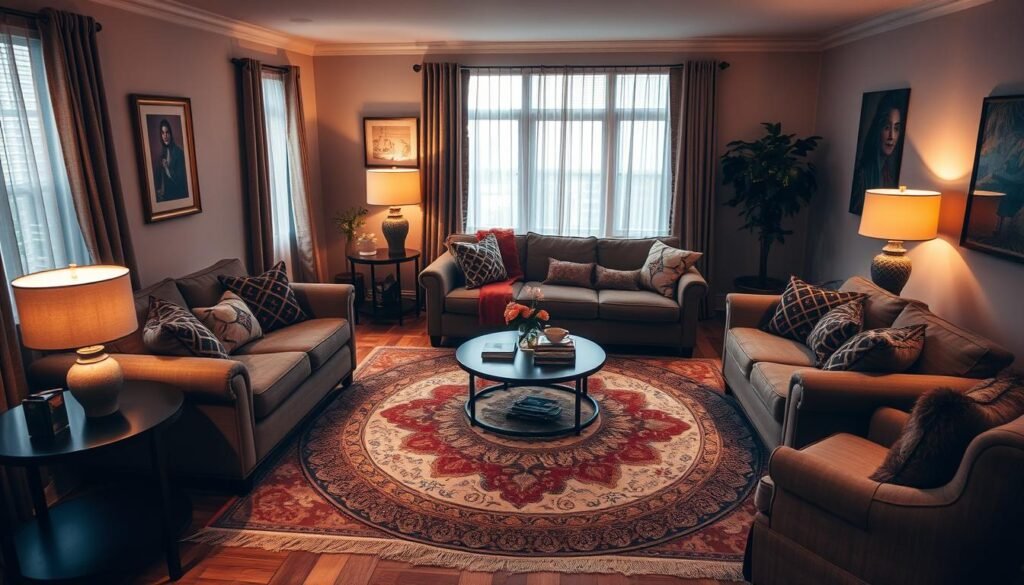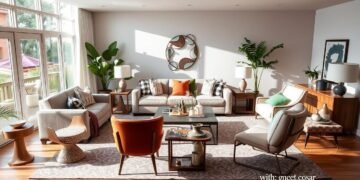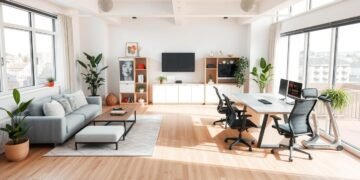When you enter your living room, the furniture layout is key. It can turn a room into a place where people connect and share stories. A well-planned layout makes your space a lively spot for socializing.
In your home, there’s a story waiting to be told. Let’s discover how to make your living room a place where people gather and talk1.
Table of Contents
- 1 Understanding the Fundamentals of Social Space Design
- 1.1 The Psychology of Social Spaces
- 1.2 Relatedarticles
- 1.3 8 Tips for Balancing Symmetry and Asymmetry in Your Furniture Layouts
- 1.4 5 Effective Layout Strategies for Multi-Purpose Rooms & Shared Spaces
- 1.5 6 Virtual Tools & Apps to Perfect Your Layout Before You Buy
- 1.6 Key Elements of Comfortable Conversation Areas
- 1.7 Traffic Flow Considerations
- 2 Conversation Area Furniture Layout: Essential Principles
- 3 Creating Focal Points for Enhanced Social Interaction
- 4 Symmetrical vs. Asymmetrical Seating Arrangements
- 5 Optimizing Small Spaces for Intimate Conversations
- 6 Using Area Rugs and Lighting to Define Conversation Zones
- 7 Sectional Sofa Arrangements for Large Group Discussions
- 8 Incorporating Natural Elements and Comfort Features
- 9 Open Plan Living Room Conversation Areas
- 10 Conclusion
- 11 FAQ
- 11.1 How can I create inviting conversation areas by arranging furniture?
- 11.2 What should I consider when designing social spaces?
- 11.3 How can I arrange furniture to create a cozy conversation area?
- 11.4 How should I design layouts around designated focal points?
- 11.5 What are the differences between symmetrical and asymmetrical furniture arrangements?
- 11.6 How can I maximize small living spaces for conversation areas?
- 11.7 How can I use area rugs and lighting to define conversation zones?
- 11.8 How can I use sectional sofas to create flexible conversation areas?
- 11.9 What other features can enhance the comfort and ambiance of conversation areas?
- 11.10 How can I define conversation areas in open-plan spaces?
Key Takeaways
- Arrange furniture to maximize space and encourage social interaction
- Prioritize function over form for comfortable everyday use
- Utilize multi-functional furniture to create versatile layouts
- Incorporate vertical elements and neutral color palettes to make rooms appear larger
- Strategically position seating to direct traffic around the conversation core
Understanding the Fundamentals of Social Space Design
Creating engaging social spaces involves understanding how people interact. It’s about designing areas where people feel comfortable talking. By focusing on traffic flow, seating, and design, you can make spaces that bring people together2.
The Psychology of Social Spaces
The colors, materials, and lighting in a space greatly affect its mood. Warm colors like reds and oranges make spaces lively and inviting for chats3. Cool colors like blues and greens are better for quiet talks or thinking3.
Using natural materials like wood adds warmth and makes spaces feel real3.
Key Elements of Comfortable Conversation Areas
Choosing the right furniture is key for good conversation spots. Soft fabrics like velvet make spaces cozy, encouraging people to chat3. Adjustable lighting lets people change the mood as needed3.
Flexible furniture helps spaces adapt to different activities, keeping them lively3.
Traffic Flow Considerations
Designing spaces for easy movement is vital. Arrange furniture to keep paths clear, making it easy for people to move around2. This ensures conversations flow smoothly and people can mingle freely.
Conversation Area Furniture Layout: Essential Principles
Creating a cozy conversation area is more than just placing furniture. Move pieces away from walls and group them in the room’s center4. Choose light-colored or leggy furniture to make the space feel bigger4. Use matching sofas, chairs, and end tables for a neat, organized look4.
It’s important to pick furniture that fits the room and its users4. Add practical storage like ottomans or side tables with shelves to keep things tidy4.
Your conversation area should look good and be comfortable5. By following these tips, you can make your living room a place where people want to stay and talk5.
“The placement of furniture should create a unified whole that serves a purpose, offers comfort and convenience, and looks good.”5
| Principle | Benefit |
|---|---|
| Pull furniture away from walls | Promotes a cozy, intimate atmosphere4 |
| Use light, leggy furniture | Enhances the sense of spaciousness4 |
| Employ symmetrical arrangements | Creates a streamlined, organized look4 |
| Select appropriately scaled furniture | Ensures comfort and functionality4 |
| Incorporate practical storage | Maintains an uncluttered, organized space4 |
Creating Focal Points for Enhanced Social Interaction
Designing layouts around focal points can make social spaces more engaging. Whether it’s a cozy fireplace, a captivating window view, or a striking media center, arranging furniture to keep these elements in view can greatly improve conversation among guests6.
Fireplace-Centered Arrangements
In living rooms, the fireplace is often the main attraction, with 67% of homeowners placing furniture around it6. A U-shaped seating setup, along with console tables and ottomans, can create a cozy fireside area. This setup encourages lounging and socializing6.
Window-Focused Layouts
Rooms with beautiful window views can become social hubs when furniture is arranged to showcase them. 22% of living room designs focus on this layout, allowing guests to enjoy the view while chatting6.
Art and Media Center Integration
Using a statement piece of art or a media center as the focal point can also enhance social interaction. Options like art display modes or cabinets can hide technology while keeping the design cohesive and inviting6. These thoughtful choices can increase user satisfaction and emotional connection to the living room by up to 50%6.
By placing furniture to highlight these central elements, you can make living rooms more social. This encourages meaningful connections among guests6.
Symmetrical vs. Asymmetrical Seating Arrangements
Choosing between symmetrical and asymmetrical seating can greatly affect a room’s look and feel. Symmetrical layouts, like two sofas facing each other, bring a formal and balanced vibe78. They work well in big living rooms, making the space look cohesive7.
Asymmetrical setups, like an L-shaped sofa with chairs and a table, add a lively and casual feel78. These are great for smaller rooms, as they balance the space without feeling too crowded7.
It’s important to have flexible seating to encourage good conversations78. Using pieces like sectional sofas and ottomans lets you change the seating for different events7.
| Symmetrical Layouts | Asymmetrical Layouts |
|---|---|
|
|
In open floor plans, symmetrical and asymmetrical seating can help define areas8. By placing furniture smartly, you can create zones for dining, lounging, and working78.
Choosing between symmetrical and asymmetrical seating depends on the room’s size and your goals78. Try out different setups to find the best mix for your space78.
“Furniture arrangement can make or break the functionality and ambiance of a space. Striking the right balance between symmetry and asymmetry is key to creating an inviting conversation area.”
Optimizing Small Spaces for Intimate Conversations
When you have a small living room, every inch counts. Using multi-functional furniture and smart layouts can make a big difference. You can turn a tiny space into a cozy spot for close talks.
Multi-functional Furniture Solutions
Choose furniture that does more than one thing. For example, ottomans can be coffee tables, seats, or even storage9. A settee or love seat, about 66″ to 75″ wide, fits well without taking up too much space9. Side tables and small round tables add balance to your setup9.
Space-Saving Layout Strategies
In small rooms, it’s important to manage visual weight10. Light-colored furniture and pieces with legs make the room feel bigger10. Light walls and ceilings also help make the room look larger10.
Window banquettes or built-in seats save space compared to big sofas10. Floating furniture away from walls adds to the cozy feel10.
Visual Weight Management
To make small living rooms feel bigger, use visual tricks10. Room dividers help keep the space organized and prevent it from feeling too crowded10. Try different shapes, textures, and custom furniture to make awkward spaces look good10.
With the right furniture and layout, even tiny living rooms can be perfect for cozy chats.
Maximizing small spaces is all about careful planning, versatile furniture, and smart layouts. These elements create a space that feels bigger and more welcoming for close conversations11.
Using Area Rugs and Lighting to Define Conversation Zones
Creating cozy spots for talking in your living room is a smart design move. It can make your room more functional and warm. Area rugs and lights help set up special areas for chatting and improve the mood12.
Area rugs are key in marking off areas for sitting and talking. Choose a rug big enough for all your furniture, with each piece’s leg on the rug12. This makes the area feel more connected and cozy13.
Lighting also sets the mood and highlights where people will sit. Use natural light from windows or skylights to brighten the space12. Add different kinds of lights to create a nice glow for chatting1214.
Think about the color of your lights and how they look with your rugs. Warm lights bring out the beauty of natural rugs, while cool lights make bright colors pop13. Lights that can be dimmed let you change the mood for any activity, making your space feel welcoming14.
By using area rugs and smart lighting, you can make your living room better for talking. It becomes a place where people enjoy spending time together121314.
Sectional Sofa Arrangements for Large Group Discussions
Sectional sofas are great for big group talks. They can fit about 3 people, and two sofas can seat 415. This makes them perfect for places where people gather and chat, as they use space well.
L-Shaped Configuration Benefits
An L-shaped sectional is comfy and welcoming for big groups. It lets people sit diagonally, which helps conversations flow better. Plus, it can mark off a space for talking, which is great in open areas16.
U-Shaped Layout Applications
A U-shaped sectional is great for including everyone in talks. It has lots of seats, perfect for families or when you have lots of guests. The U-shape makes everyone face each other, making it cozy for chats16.
Modular Flexibility Options
Modular sectionals are super flexible for big group seating. You can change their shape to fit any event. They’re perfect for movie nights or lively discussions, as you can adjust them to fit your space needs16.
Using sectional sofas smartly can make great spots for big groups to talk. They offer both style and function, from L-shapes to modular designs. They’re a smart choice for making any space better for socializing151617.
Incorporating Natural Elements and Comfort Features
Designing cozy conversation areas is all about using natural elements and focusing on comfort. Natural elements like plants, water features, and sunlight make spaces feel relaxing. Comfortable seating and cozy conversation areas help guests feel right at home. This mix creates relaxed seating arrangements perfect for deep conversations.
Adding houseplants improves air quality by removing carbon dioxide and adding oxygen. This makes the air fresher and healthier18. Plants near seating areas also bring a sense of calm and connection to nature. Plus, getting enough natural light boosts mood and productivity, making us feel better18.
Using earthy colors like green, brown, and blue makes spaces feel cozy and relaxing18. Designing with nature in mind, or biophilic design, reduces stress and improves mood18.
Choosing durable and visually appealing natural materials like wood, stone, and bamboo adds authenticity. Textiles that feel like natural materials, like linen and wool, make spaces cozy and comfortable18.
By carefully adding these natural elements and comfort features, you can make inviting conversation areas that are relaxing and uplifting181920.
Open Plan Living Room Conversation Areas
In open-plan living spaces, placing furniture wisely is essential. It helps create different conversation areas while keeping the space flowing21. Placing sofas with their backs outwards can visually separate areas like the dining room or kitchen22. This simple trick adds privacy and intimacy to the larger space21.
Zone Separation Techniques
To define conversation zones, use console tables, area rugs, or bookcases21. These items act as subtle boundaries, guiding traffic and defining areas for conversation and rest22. Changing the flooring or adding slight level changes can also mark the living room from other areas, creating a natural transition23.
Furniture Placement for Flow
Arrange furniture in an open-plan living room to keep paths clear for a smooth flow21. Place sofas, chairs, and ottomans to create order and intention, making movement easy22. Using modular or multi-functional furniture adds flexibility, allowing the layout to change as needed22.
Creating Visual Boundaries
Adding plants or large windows can merge indoor and outdoor spaces, creating a unified atmosphere23. Keeping the flooring material consistent throughout the living room also helps unite the space23.
By carefully applying these techniques, you can make your open-plan living room a welcoming space. It encourages meaningful conversations and social interaction212223.
Conclusion
Exploring ways to make your living room inviting24 shows that good furniture arrangement is essential. It helps create spaces where people can talk and feel at ease. By understanding how social spaces work25, you can turn your living room into a place where everyone wants to be.
Choosing the right seating layout24 is important. It should make it easy for people to talk and move around. Adding pieces that serve more than one purpose25 helps save space. Area rugs and the right lighting can also help make different areas for talking25.
Creating inviting24 areas is all about finding the right mix of looks and use. Arrange your furniture well, add comfort, and use visual tricks. This way, your living room will not only look good but also bring people together2425. Try out different setups until you find the one that works best for you and your home. Enjoy the change that comes from a well-designed space.







